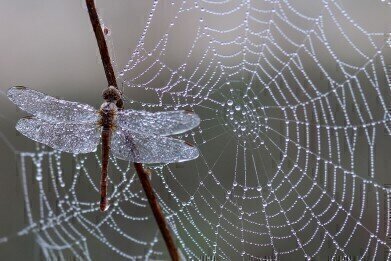Environmental Laboratory
Why Are UK Insect Numbers Dropping?
Apr 04 2019
Despite their diminutive size, insects are by far the most numerous and varied of all animals on the planet, outweighing their human counterparts by a cumulative ratio of 17 to 1. However, recent years have seen a precipitous drop in the number of insects around the world, including on the British Isles.
These alarming developments have fuelled fears that a deficiency of insect life could have a catastrophic impact on the food chain. With birds and smaller mammals unable to find enough prey to sustain themselves, their populations will also begin to ebb away and so on further up the food chain, until we ourselves are finally endangered. But why is this happening?
Insects in decline
Last month, the first global review of insect populations over the last century or more was published in the journal Biological Conservation. In it, researchers pulled together data from 73 peer-reviewed studies of insect populations to gain the most comprehensive understanding of the falling numbers to date.
Their findings do not make for pleasant reading. 40% of all insect species (of which there are millions) are in decline, while one third of them are endangered. Insect populations are falling a whopping eight times more quickly than their bird or mammal equivalents and 2.5% of total specimens are being lost every year.
Uncertain causes
While it’s impossible to definitively highlight a single cause for the drop-off in insect populations, experts believe that a combination of different anthropological factors, including land contamination, habitat disruption and climate change is the most likely answer. Chief among these is the use of pesticides, which have achieved notoriety in the media of late due to their harmful impact on bees.
Another leading culprit is thought to be climate change. While advanced human technology has enabled us to predict extreme weather events with ever-longer foresight, this does not prevent insects from being damaged by warmer temperatures. The hypothesis is borne out by the falling numbers of moths in the UK, which have fallen by approximately 66% in the last 50 years.
A tangled web
Of course, it’s not as clear cut as all that. While certain moth species, such as the V-moth, have declined by an alarming 99% in that time, others (like the footman moth) have ballooned by 1,500% in the same period. What’s more, the population numbers vary according to geography. More southerly regions have experienced a more pronounced reduction, while Scottish numbers have remained stable, even if the most populous region has moved northwards.
“We can only assume that this is because of warmer temperatures,” explains entomologist Chris Shortall. “But identifying any one driver for changes in insect behaviour is next to impossible. There are too many variables: it could be climate change, urbanisation, changes in agricultural methods, the use of different pesticides, and many more.”
Digital Edition
IET 34.2 March 2024
April 2024
Gas Detection - Biogas batch fermentation system for laboratory use with automatic gas analysis in real time Water/Wastewater - Upcycling sensors for sustainable nature management - Prist...
View all digital editions
Events
Apr 22 2024 Hannover, Germany
Apr 22 2024 Marrakech, Morroco
Apr 23 2024 Kuala Lumpur, Malaysia
Apr 23 2024 Kintex, South Korea
Apr 23 2024 Edmonton, AB, Canada


















